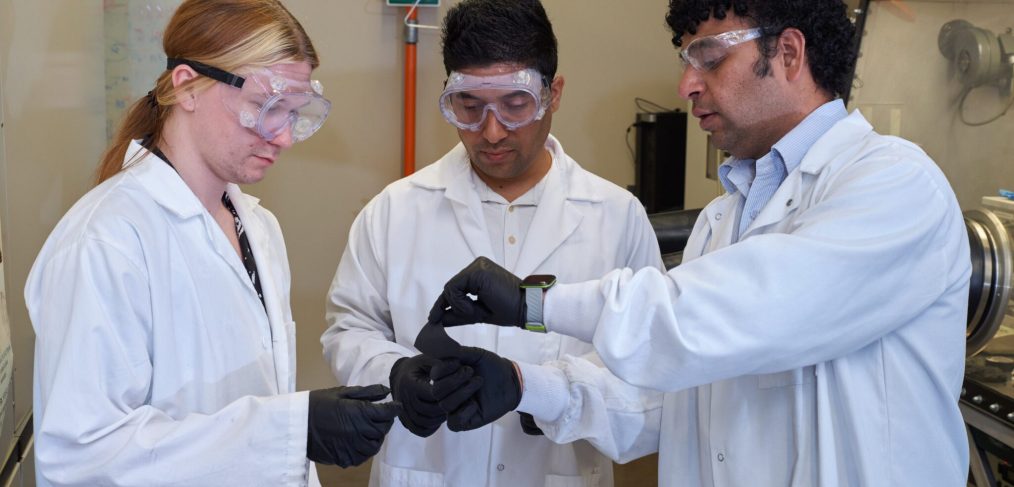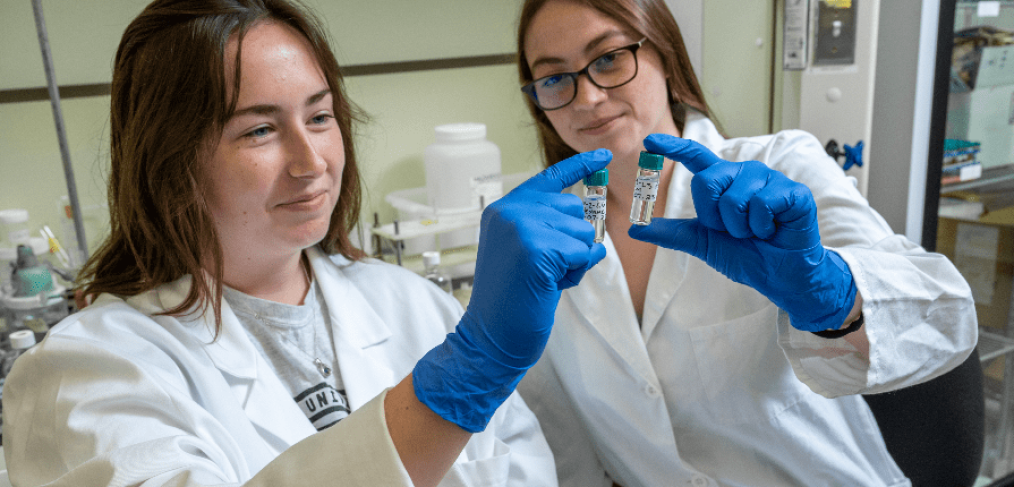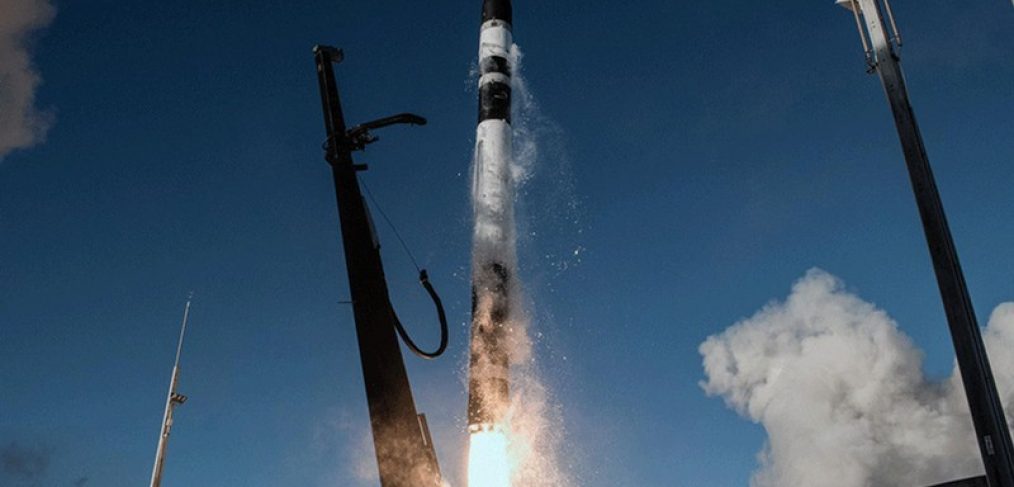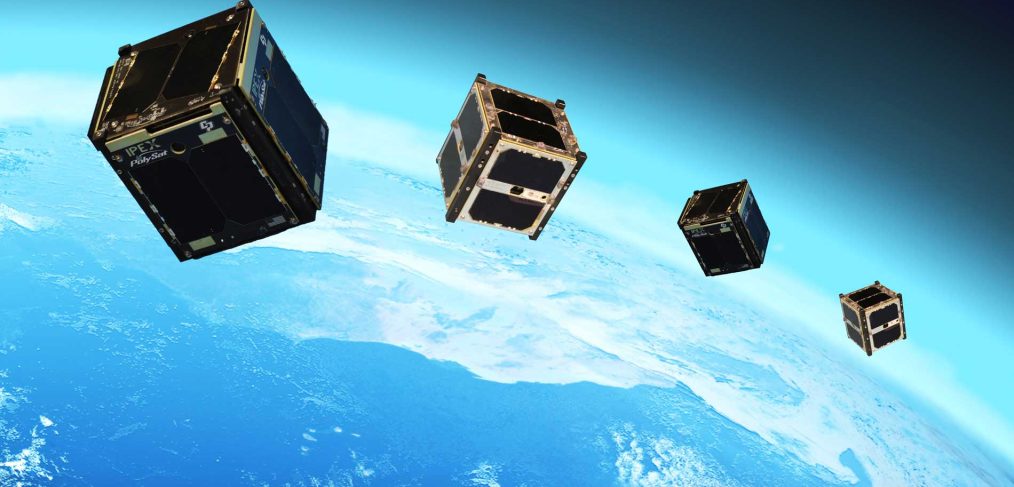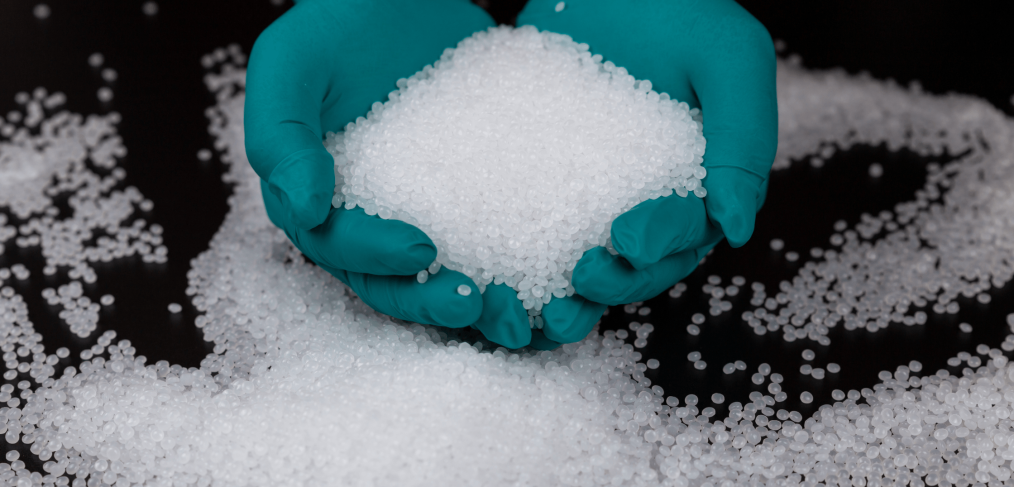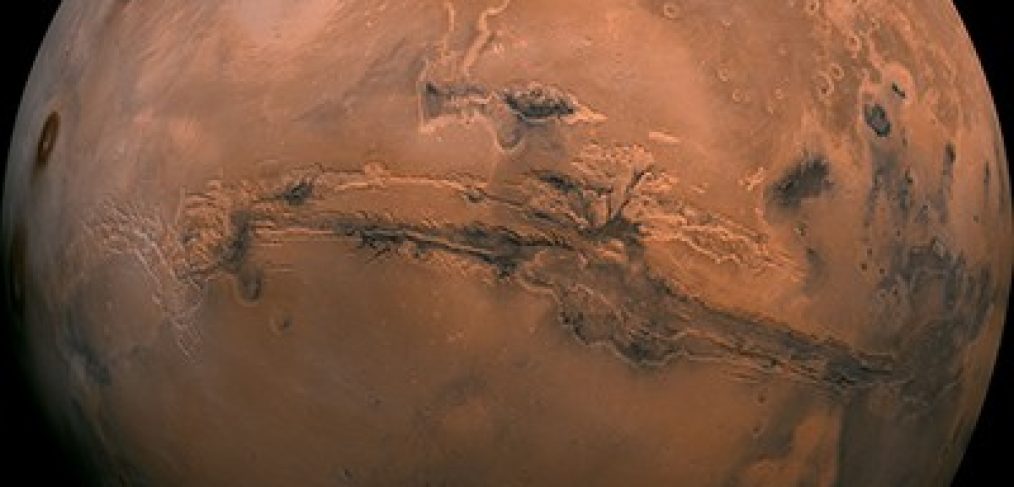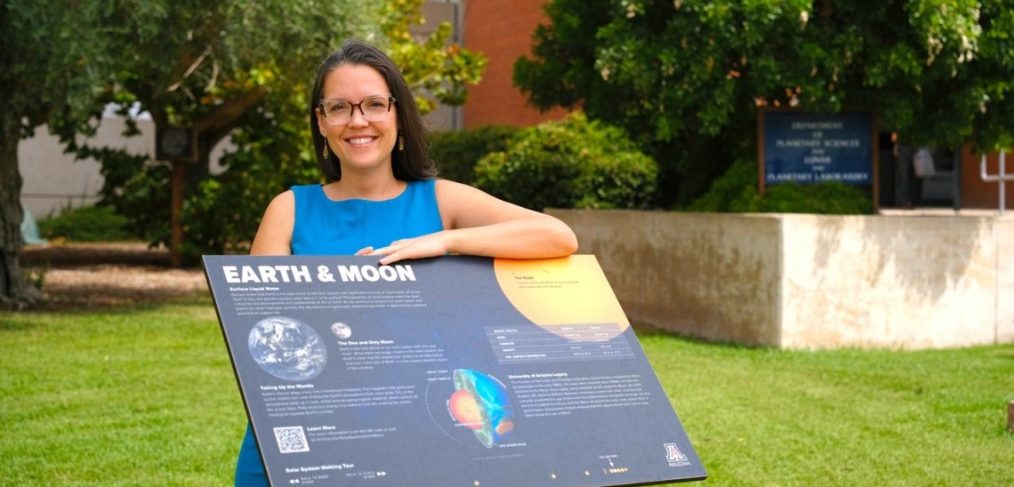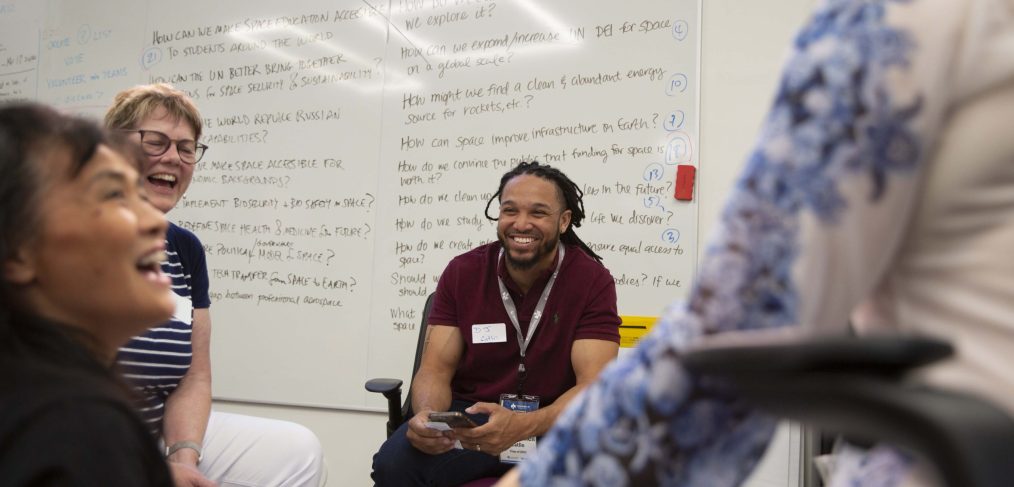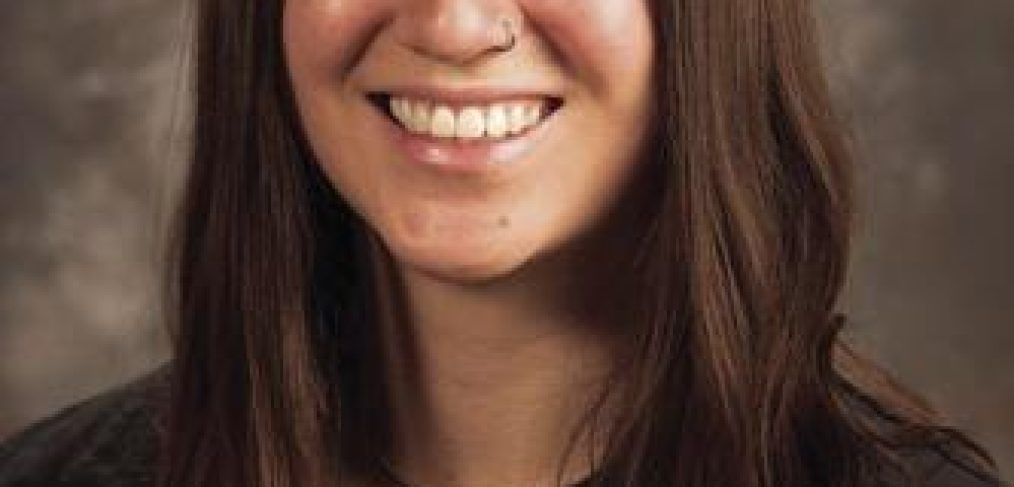Thanks to a University of Arizona student and her childhood dream, visitors to the UArizona campus now can take a walk through the solar system at the same time.
Zarah Brown, a doctoral student at the UArizona Lunar and Planetary Laboratory, led the installation of 11 plaques depicting various objects of the solar system true to scale. Designed to show the relative sizes and distances of solar system objects at a 1:5 billion scale, the outreach project aims to make space science accessible to people of all ages and backgrounds and to highlight UArizona’s accomplishments exploring the solar system.
Dedicated with a ribbon-cutting ceremony on Sept. 8, the stations comprising the Arizona Scale Model Solar System are spaced out across two-thirds of a mile of campus between the Kuiper Space Sciences Building and the intersection of East University Boulevard and North Euclid Avenue.
A project website, accessible by QR codes at each stop, will provide information via screen readers for the visually impaired, as well as additional details as new scientific discoveries are made.
The project is the result of collaborative efforts made possible by the support of the NASA Space Grant program and an anonymous benefactor.
Read the full article on the University of Arizona News Page.
Author Credit: Daniel Stolte
Image Credit: Harry Tang/University of Arizona
